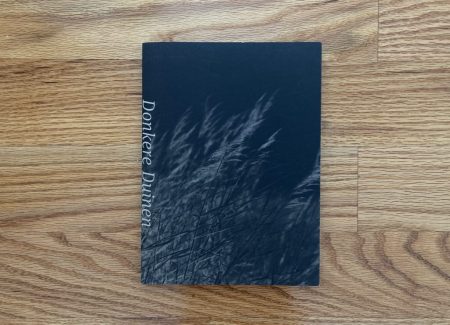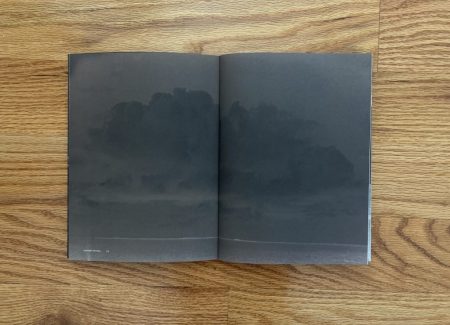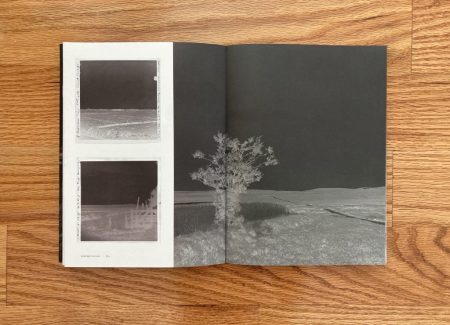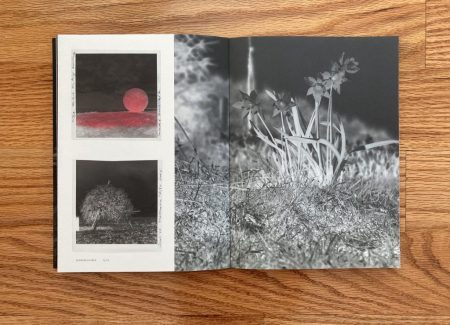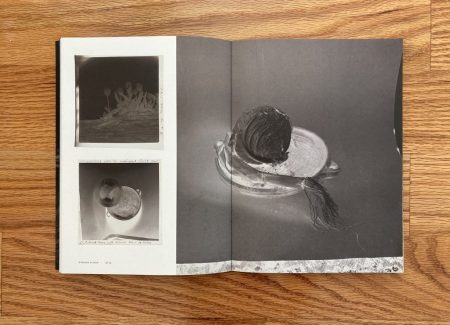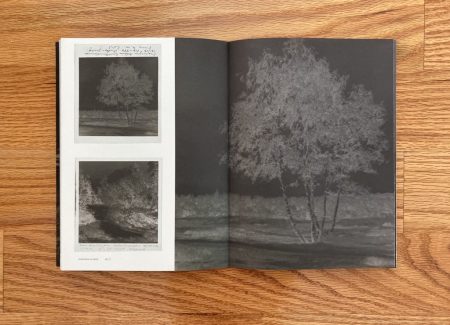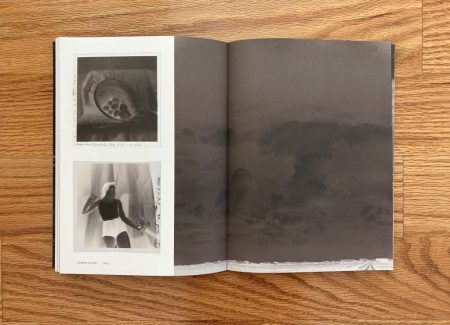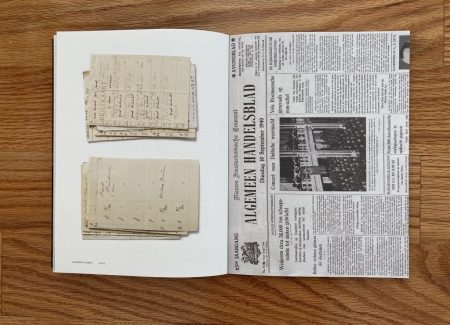JTF (just the facts): Published in 2020 by Van Zoetendaal Publishers (here). Softcover with a dust jacket (22×16.5 cm), 48 french folded pages, with 51 plates. Includes an essay by Wilco Versteeg (in Dutch, with English text on insert paper). In an edition of 300 copies. Design by Willem van Zoetendaal. (Cover and spread shots below.)
Comments/Context: The Dutch photographer Rein Jelle Terpstra is interested in exploring the relationships between perception, memory, and the absence of images. He spent a number of years researching and sourcing the photographs ordinary people took of Robert F. Kennedy’s funeral train as it traveled from New York to Washington, D.C., in 1968. His photobook Robert F. Kennedy Funeral Train, The People’s View (reviewed here), provides an intriguing counterpoint to Paul Fusco’s celebrated images of the crowds that stood along the tracks. Terpstra’s project not only shows a clever use of archival and vernacular imagery, but also considers questions about the role of photographs and their reinterpretation in different contexts.
Terpstra’s recent photobook Donkere Duinen, meaning “dark dunes” in Dutch, is a smaller effort, yet it raises intriguing questions about how photography can conceal reality. It uses as its source material the found photographs taken by an enthusiastic amateur, whose identity remains unknown (and in this context is not essential). The photographer was meticulous in keeping records on the margins of the negatives: aperture stops, shutter times, type of camera, time of day, year, and even the weather conditions. The photographs document landscapes, dunes, tulips, farm fields, country lanes, cloudy skies, and other small details of everyday rural life in Holland. The peculiar and key part in viewing the series is the fact that these photographs were taken between 1938 and 1946, during the German occupation of the Netherlands in World War II. The destruction of war, human suffering, or any other indications of what was happening right at the same time period are completely absent from the quietly lyrical photographs.
Donkere Duinen is a softcover book of a comfortable size. The title appears on the very edge of the left side. Inside, all photographs are printed as negatives, just as Terpstra found them. Each spread shows two negatives in their actual size on the left, and one of the images from the series is printed in a full bleed slightly extending from the right back over to the left side. The dust jacket, french folded pages, uncoated paper, and elegantly placed page numbers are all fine design elements.
The book opens with a full bleed spread depicting an ominous bank of clouds over a field, in dark copper colors. Two negatives on the following spread capture the cloudy sky over a thin line of field and again over a close up of wild flowers. The handwritten text along the border gives the pictures the physicality of artifacts. Other images capture clusters of trees, a windmill, waving grasses and sunflowers, roads to the village, a crow perched on a fence post, plates of vegetables, candles – they feel thoughtful and attentive to the rhythms of farm life, and the reversed tonalities give the images a sense of haunted gloom. One surprising shot, placed in the middle of the book in a full spread, depicts a small airplane, crashed nose down, with a small group of people around it – it feels like a bold intrusion from the outside world, a strange and perplexing novelty. The last negative in Terpsta’s edit is a portrait of a woman holding a skull with an outstretched arm, as if making a reference to Hamlet’s existential reflection.
In the last section of the book, Terpstra shows folders (or cards) covered with photographer’s notes, and he also adds a number of newspaper clippings from the time period the photographs were taken. The text is in Dutch, but a front page photograph captures a concert hall with a Nazi flag, and there are photographs of soldiers and mentions of Goering, battles, and other war related news. All of this stands in stark contrast to calm and idyllic photographs. Terpstra finds it fascinating that during all the years that the war was taking place, this photographer decided to turn her or his camera away from those horrors, and instead focus entirely on landscapes, flowers, the changing sky, and other serene scenery. Perhaps photography provided an escape, or a meditation. In his essay, Wilco Versteeg notes that “the photographs are signs of a by-gone era and of photography’s impotence: an image of a blooming sunflower exerted equal influence on the course of the war as did the images of the German bombing of Rotterdam.”
Donkere Duinen is a modest yet surprisingly elegant book, a self-contained project which uses photography to ask questions about what is represented, and at the same time, what is omitted. They consider how photography can provide a diversion from unpleasant realities, leaving the primary action outside of the frame.
Collector’s POV: Rein Jelle Terpstra does not appear to have gallery representation at this time. Collectors interested in following up should likely connect directly with the artist via his website (linked in the sidebar).
